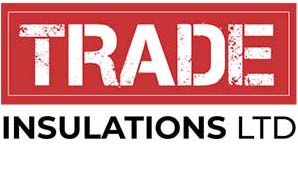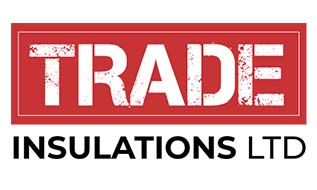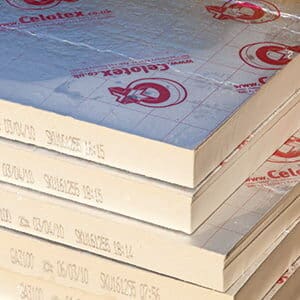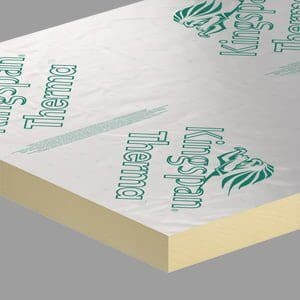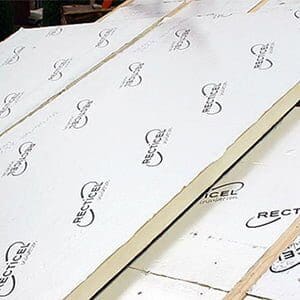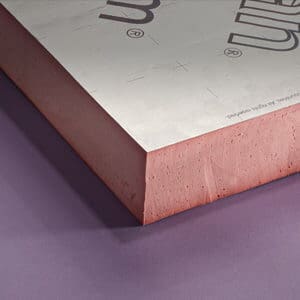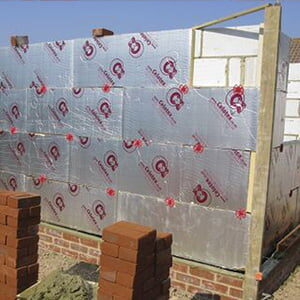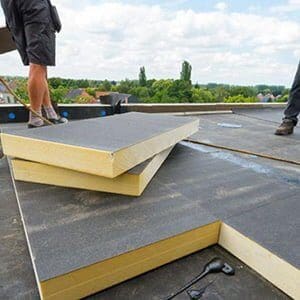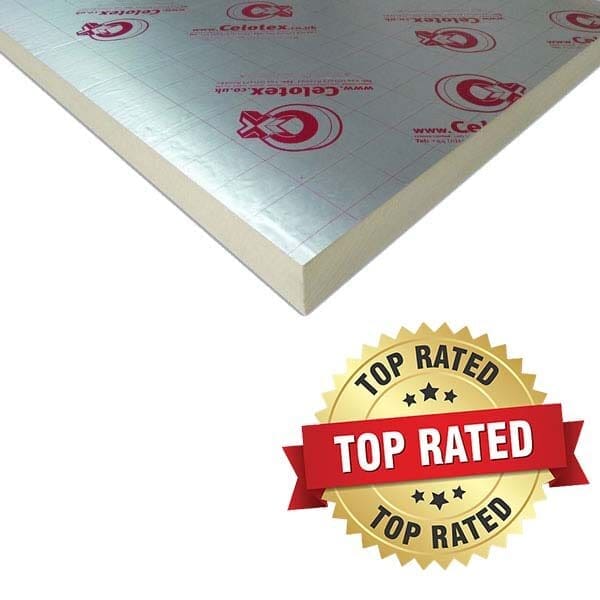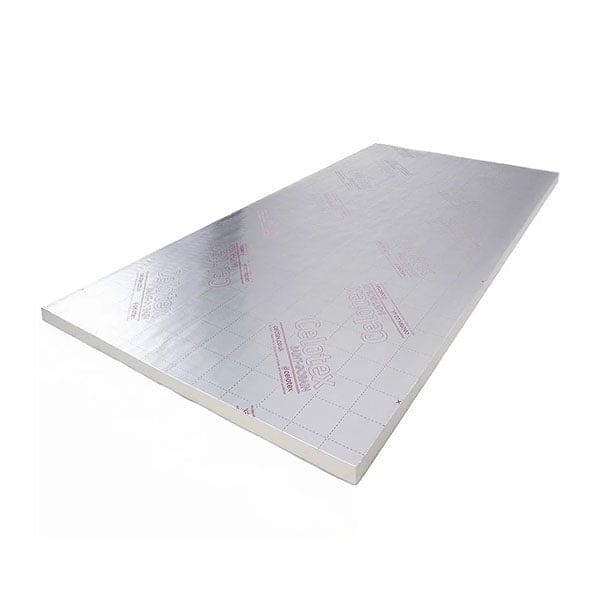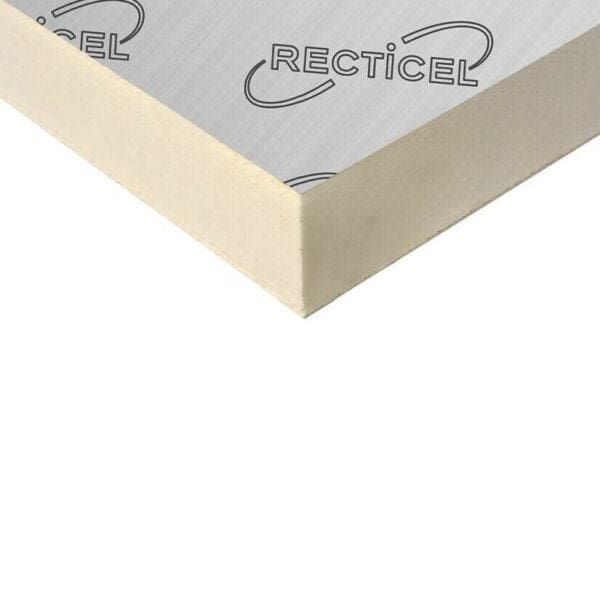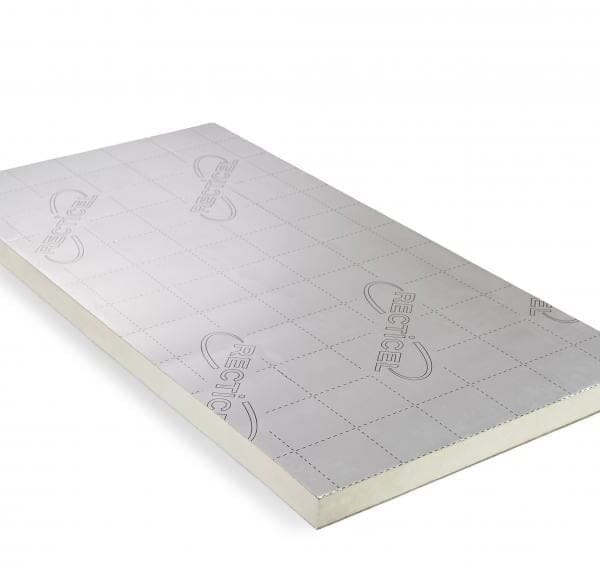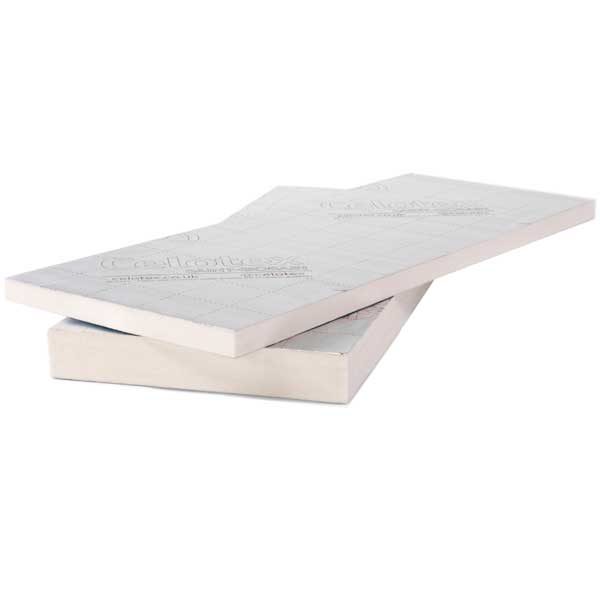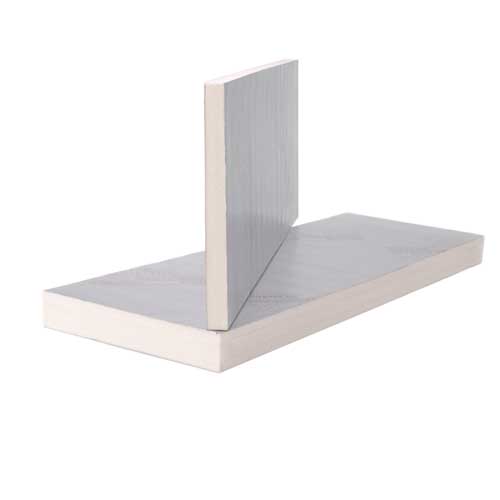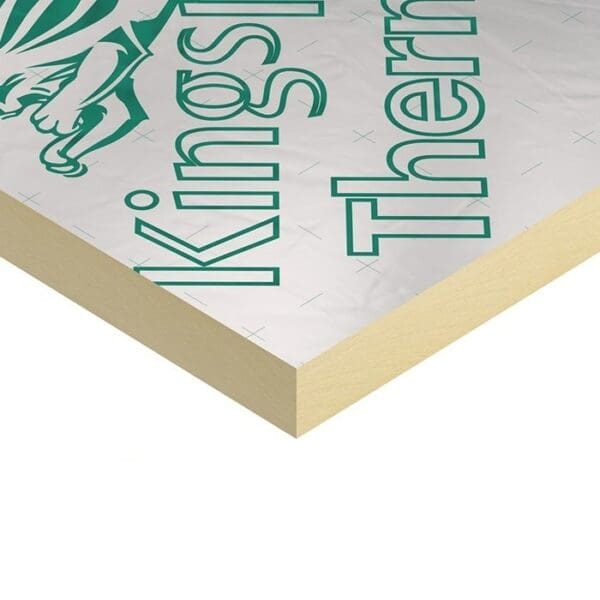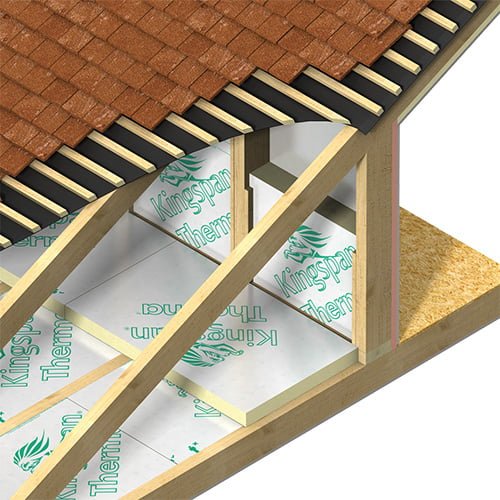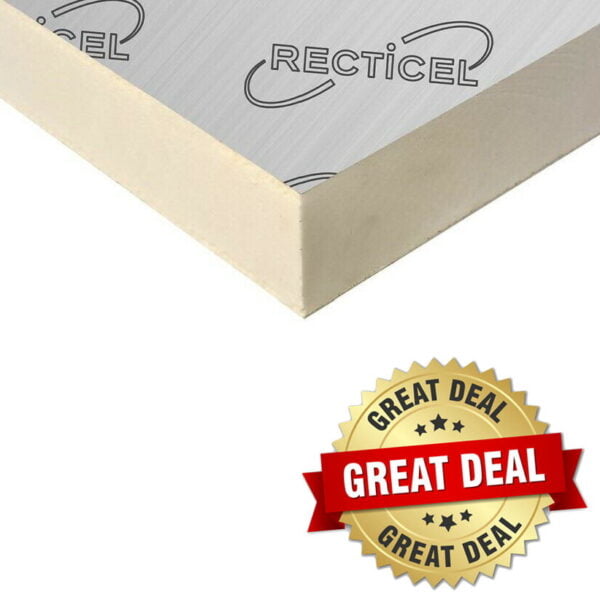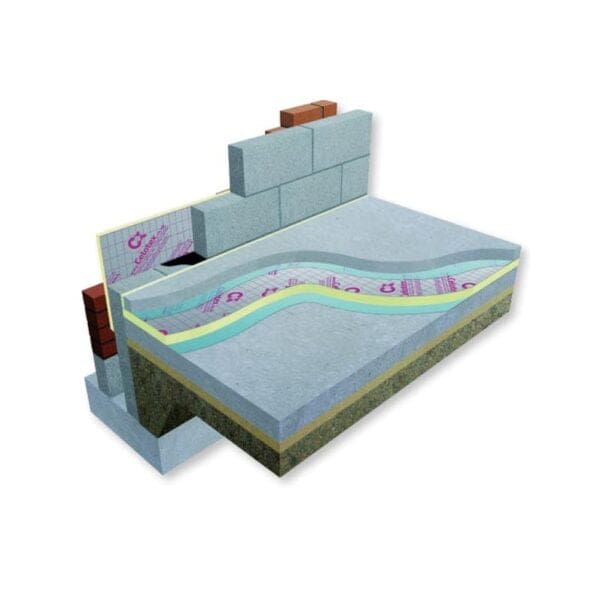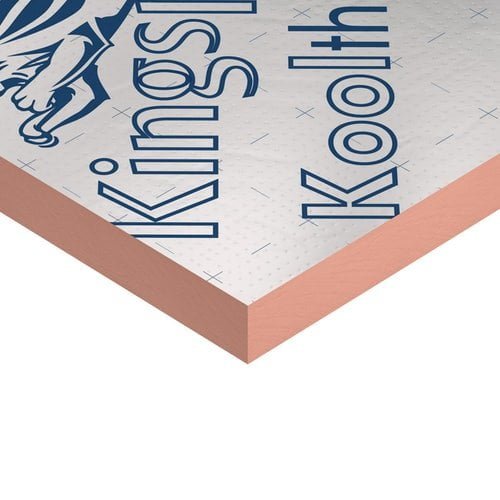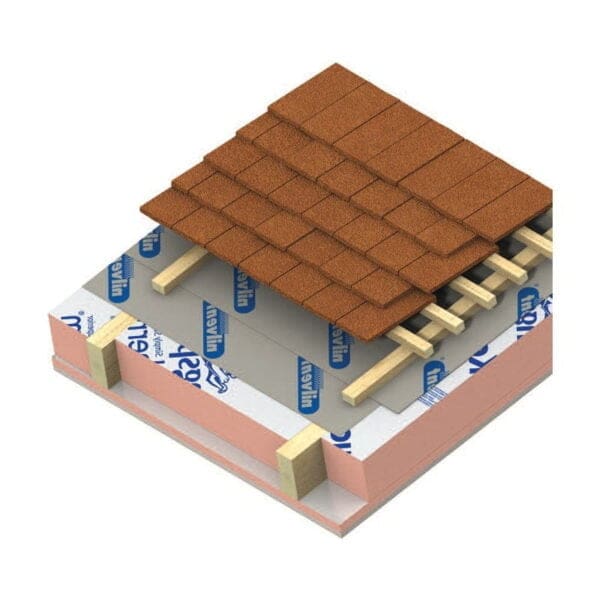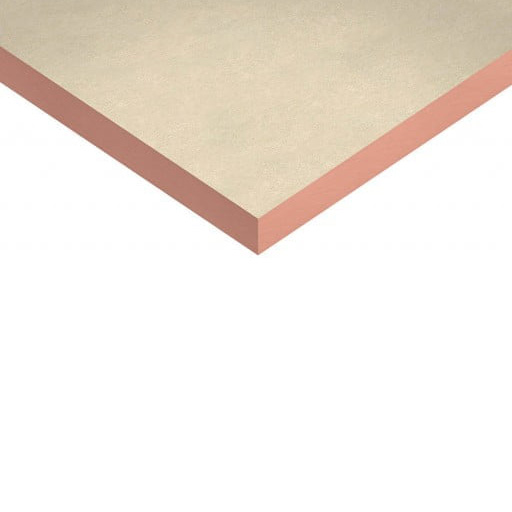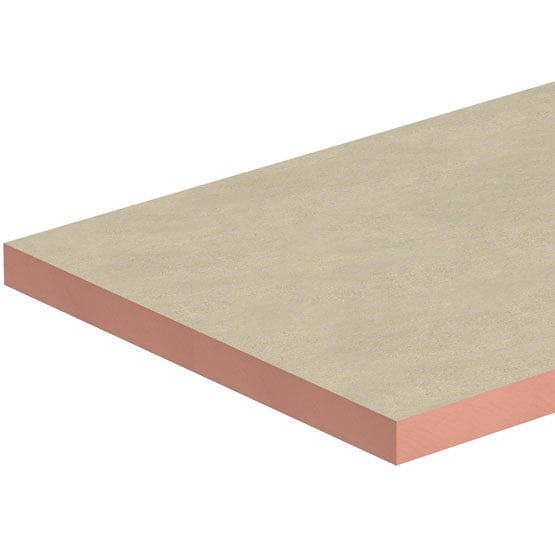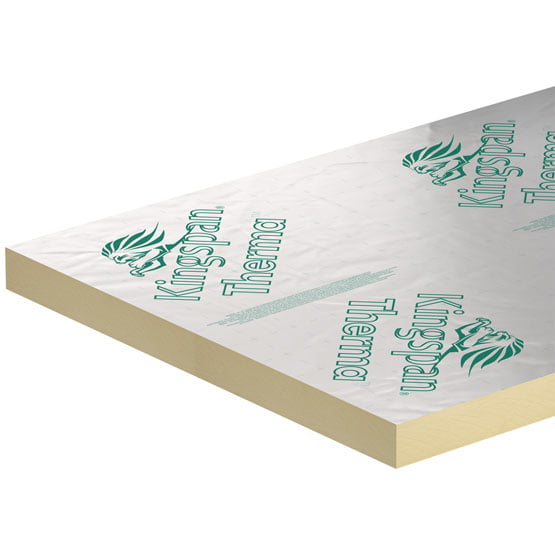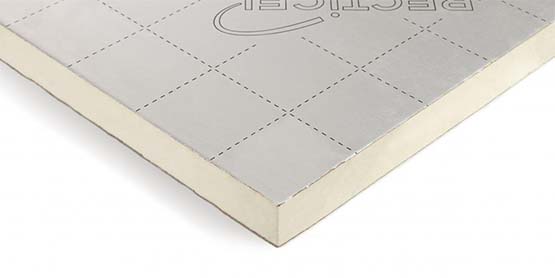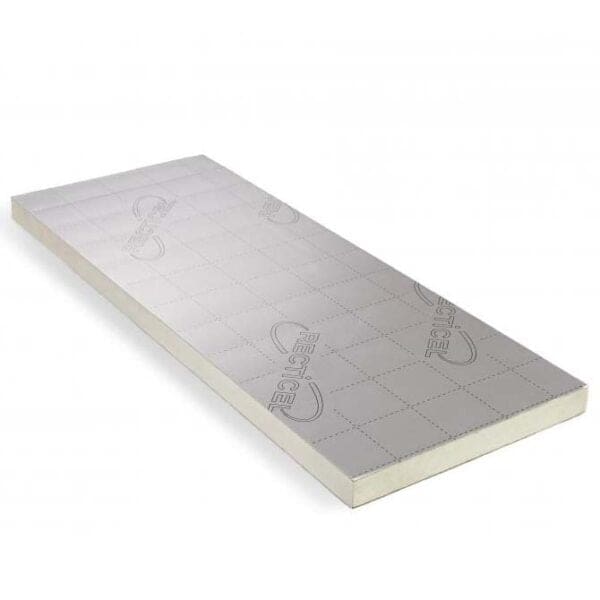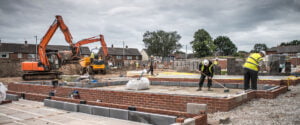Insulation Boards
Check out our range of insulation boards from brands such as Celotex, Kingspan, Ecotherm, and Mannok and many more. These insulation boards can be used almost anywhere in a building, whether it’s on the roof, walls, or floors. Foil-backed insulation (boards faced with aluminium foil) are more popular than paper or bitumen-backed insulation. Other materials, such as plasterboard, bitumen, or glass fleece may also be applied to the boards. Use the filters on our website to find the ideal board for your job. If you need assistance, feel free to get in touch with us. We are happy to help find the insulation board you need.
Showing 1–16 of 198 results
Celotex 100mm PIR Insulation Board – GA4100 (2400mm x 1200mm x 100mm) 2.88m2
Original price was: £39.99.£28.33Current price is: £28.33. ex VAT100mm Recticel GP Insulation Boards (1200x2400mm) – 2.88m2
Original price was: £39.99.£28.33Current price is: £28.33. ex VAT100mm Kingspan TP10 Thermapitch PIR Insulation Board (2400 x 1200mm) – 8.64m2 pack
Original price was: £155.29.£119.33Current price is: £119.33. ex VAT120mm Celotex Insulation Board – XR4120 (2400mm x 1200mm x 120mm) 2.88m2
Original price was: £51.99.£34.99Current price is: £34.99. ex VAT25mm Kingspan TP10 Thermapitch PIR Insulation Board (2400 x 1200mm) – 34.56m2 pack
Original price was: £199.99.£174.15Current price is: £174.15. ex VAT25mm Recticel GP Insulation Boards (1200x2400mm) – 2.88m2
Original price was: £18.29.£11.00Current price is: £11.00. ex VAT50mm Celotex Insulation Board – GA4050 (2400mm x 1200mm x 50mm) 2.88m2
Original price was: £25.15.£16.50Current price is: £16.50. ex VAT50mm Recticel GP Insulation Boards (1200x2400mm) – 2.88m2
Original price was: £25.15.£16.50Current price is: £16.50. ex VAT70mm Recticel GP Insulation Boards (1200x2400mm) – 2.88m2
Original price was: £34.89.£23.45Current price is: £23.45. ex VAT75mm Celotex Insulation Board – GA4075 (2400mm X 1200mm X 75mm) 2.88m2
Original price was: £34.99.£23.50Current price is: £23.50. ex VAT75mm Kingspan TP10 Thermapitch PIR Insulation Board (2400 x 1200mm) – 11.25m2 pack
Original price was: £179.22.£128.46Current price is: £128.46. ex VATKingspan K107 50mm Pitched Roof Insulation Board (2400 x 1200mm) – 17.28m2 pack
Original price was: £344.65.£313.95Current price is: £313.95. ex VATKingspan Thermafloor Insulation Board TF70 – 100mm – 2400x1200mm – 8.64m2 pack
Original price was: £155.29.£119.33Current price is: £119.33. ex VATA popular type of insulation board are rigid boards, which are made up of compact material (mainly Polyisocyanurate) with insulation properties. These PIR boards are available as sheets in a variety of thicknesses. One of our most popular rigid insulation boards is the 100mm Celotex. Celotex is our most popular brand due to its wide range of insulation boards and various thicknesses.
PIR boards are made by mixing chemicals using a blowing agent, which forms bubbles. This method creates a rigid block with low density, closed-cell insulation sheets. Gas is trapped in the cells and has a low thermal conductivity which means the insulation will provide better performance.
This product is an essential part of most construction projects. It can be installed in roofs, walls, ceilings, and floors. When sheets of insulation are used in new builds or extensions, it can be installed into the cavity or stud work when construction takes place. The boards can also be installed on the internal side of external walls and on the outside of the property. Cavity insulation boards can also be fitted into cold spots to stop draughts and reduce heat loss by reducing heat transfer.
Applying insulation boards in a property helps to improve the energy efficiency and thermal conductivity which will save money on the energy bills of the house or commercial property.
Insulated plasterboards are a hybrid product of insulation board bonded to plasterboard.
Cheap Insulation Boards
We are the leading provider of cheap insulation boards in the UK, offering prices up to 40% below the recommended retail price (RRP). Our commitment lies in extending trade prices to the general public. Moreover, we provide express delivery, ensuring most insulation boards are delivered within 2-3 working days.
You can find insulation boards in a variety of different brands, materials, sizes, and thicknesses depending on the project you're working on. We recommend that you speak with your architect to see which insulation board is best for your project.
Rigid boards are compact materials with insulation properties that can be used to add energy efficiency to your roof, walls, ceilings, or floors. Celotex are known for their rigid insulation boards. These are made to suit the current UK Green guidelines set by the government to ensure your home is energy efficient.
Tongue and groove insulation board
Tongue and groove boards feature a series of cut slots. The precisely cut slots ensures that insulation boards fit together seamlessly without any gaps. On our website, we stock many tongue and groove insulation boards. These include the Celotex Thermaclass 21 range as well as Recticel Eurowall Plus Cavity Wall Boards.
Tapered edge PIR insulated plasterboard
Tapered edge boards feature a small taper on the edge of the board itself. They are available in a range of thicknesses. In addition to this, they can be easily installed in internal walls using the dot and dab method. Check out our handy guide on how to dot and dab.
Square edge insulation boards
The majority of insulation boards are square edge. The reason for this is so that they fit together easily and can be cut down to a required size. There are a wide range of square edge insulation boards on our website. This includes Celotex's multi purpose PIR boards. All of our product pages also include full details of individual products with a breakdown of technical specifications.
Where can you use insulation boards?
General purpose insulation boards such as Celotex PIR Boards can be used in a variety of applications. This includes flat roofs, pitched roofs, floors, and walls, which also includes inside a cavity. A lot of the insulation brands we sell have their own PIR board, which can have multiple uses. Below we have provided a breakdown of every application type as well as its effectiveness.
Walls
Insulation boards are often used for insulating walls. This includes both interior walls as well as exterior walls and cavity walls. For interior walls, we recommend the use of insulated plasterboards, this is a 2 in 1 board consisting of a PIR board laminated to a 12.5mm tapered edge plasterboard. This can save time and money on your project. In addition to this, it will allow for a smooth finish whilst retaining thermal qualities. When it comes to exterior walls, external wall insulation boards such as the Kingspan Kooltherm K5 would be appropriate.
A lot of modern buildings in the UK feature an inner and exterior wall. This reveals an opening that separates two walls. This is called the cavity. The cavity is where cavity wall insulation boards can be easily fitted. This type of insulation acts as a heat barrier. The cavity can be either partially filled or fully filled with insulation. On our website, we have a wide range of cavity wall insulation.
Installing insulation boards can result in better U-values, optimising the use of interior spaces. The U-value is an indicator of heat transfer rate through a material, where lower values signify enhanced insulation efficiency. The use of insulation boards can help preserve a comfortable indoor temperature and decrease the expenses associated with heating and cooling.
Insulation boards can help fill gaps in walls, providing a continuous thermal barrier. This can be especially useful in older buildings where gaps and voids may exist in the wall structure.
Insulation boards are also easy to maintain. If a board gets damage then it can often be covered or repaired to improve their thermal and air-tightness performance. This ensures that the insulation continues to function effectively.
Floors
It is common practice to install insulation boards in floor applications. When used in floors, people tend to use insulation boards with good compression strength. The use of floor insulation board can help lower energy usage and therefore reduce bills. When a floor is not insulated, the outer edges is a culprit for heat loss. This is where a large amount of heat can escape. By insulating your floor, you can help prevent this heat escaping. Floor insulation is typically installed in between the wooden joists and under the floors.
For suspended floors, the easiest way to install insulation is by applying the boards between the joists.
Pitched Roofs
According to the Energy Saving Trust, nearly 25% of all heat is lost through a roof. By installing insulation boards you can dramatically reduce this heat loss. Insulation boards can be attached to the interior side of pitched roofs as well as above the roof rafters or even between them. This insulates the loft and can help regulate temperatures. You may also hear people refer to roof insulation as cold roof or warm roof insulation. The difference between the two is that cold roof has insulation between the rafters. This makes the roof buildup thinner. Warm roof differs as it has the insulation above the substrate, which allows for a deeper construction.
Flat Roofs
Flat roof insulation boards are specialised for the application of flat roofs. This is because they tend to have better compression strength. This means they can tolerate being walked over. The use of insulation in flat roofs can help improve the thermal efficiency of a building.
How to cut insulation boards
Insulation Boards can be cut to size using a hand saw. They are a lightweight product which means delivery, handling, and installing insulation boards is simple and easy.
Using protective wear will prevent dust from going into your eyes or being breathed in.
Measure the space that the insulation board will be fitted into. Be aware that the measurements in older buildings may differ and not be consistent from top to bottom.
Measure the length and width against the insulation board using a tape measure and make sure any inconsistent measurements are matched against the board.
Use your ruler as a guide and mark your cutting line with a marker and then double-check the lines marked using a ruler. Note that is it better to go bigger than smaller as you can always cut more away at a later stage.
Lay the board onto a flat surface to get a more precise cut. If you are using a knife then place a ruler along your marker line and use it to guide the knife in a straight line. Next, slice along the line.
If using a fine-toothed saw place the board on the edge of a table so the excess hangs over and the saw has room to go through the board. Use your ruler as a guide and hold the board in place and cut along the line.
Once the insulation is fitted a saw or knife can be run down the side of each sheet to ensure the fit is not too tight.
Do insulation boards affect the environment?
The method used when making insulation boards acquires zero Ozone Depletion Potential (zero ODP) and a low global warming impact which means it is good for the environment and has no negative impacts.
Are insulation boards flammable?
While some insulation board can be fire resistant, polystyrene can be highly flammable and let of thick black smoke in the event of a fire so the boards should always be properly installed and covered by plasterboards, sheet metal, bricks, or concrete to ensure your house is protected.
Are insulation boards soundproof?
While general insulation may offer a reduction in noise, it is not categorised as soundproof. Nevertheless, our website features insulation options designed with acoustic and soundproofing properties for enhanced noise reduction. You can browse our soundproof insulation category on our website for all of our soundproof insulation.
Are insulation boards waterproof?
Foam boards generally do not absorb water meaning they will prevent moisture build-up in your house or commercial building however when storing Insulation Boards, they should be kept in a dry place where can’t be damaged by weather conditions.
How should insulation boards be stored?
Insulation boards should be stored on a flat surface, in a dry place where they can be protected by all weather conditions. If the boards do get affected by rain, ensure the product is wiped down and completely dry before installing.
Installing insulation boards
Insulation boards can be used in a variety of applications. We have named just a few below:
Installing Insulation Boards in Walls
Insulation board can be used to insulate inside walls. Exterior-facing rendered insulation boards are ideal for external walls.
In addition to this, smaller fasteners and timber studs can help reduce construction costs.
Due to the fact that insulation boards do not slump or sag over time like glass type insulation, they are more likely to perform well over the entire life of the building. A sealed board further enhances airtightness and thermal performance by eliminating the possibility of gaps appearing.
Insulating solid walls involves a lot of work since they cover brickwork. In the same way, it is advised to have a professional install the internal wall insulation.
Installing insulation boards In pitched roofs
Pitched roofs are commonly insulated with boards. Depending on the application, it can be positioned between, over, or under the rafters. The rigid board installed on the joist level is right above the ceiling. The rigid board below the rafters is installed.
A careful analysis of the roof layout (warm or cold) is necessary to choose the most suitable installation method.
You will need to cover the boards, which are at joist level, with chipboard if you are going to walk on the boards. Weight will be evenly distributed between the boards and joists by this method.
At Trade Insulations we believe using boards with a foil coating on both sides will help reflect the heat back into the room. When you look at the rafters, the foil should point towards you to ensure that heat is reflected back into the house.
Installing insulation boards in flat roofs
Due to their compressive strength, insulation boards are capable of enduring foot traffic on flat roofs, making them a crucial choice for modern roofs built with single-ply methods. Compression in alternative materials may lead to pooling water and leaks on the roof. Compared to other insulation types, these boards can fulfil or surpass existing standards while occupying less space. Rigid insulation is user-friendly, offering advantages for roof applications due to its lightweight nature, simple cutting process, and easy handling. Given the complexity of insulating a flat roof, engaging a professional is advised.
Installing insulation boards in floors
Energy consumption can be significantly reduced by the use of floor insulation, an area that is often overlooked. Usually, an uninsulated domestic floor does not perform well in terms of thermal efficiency. An uninsulated floor loses the most heat at its edges.
For timber floors with suspended joists, installing insulation between them is a good option. Fibrous materials are not ideal for covering the netting. The board would deteriorate, there would be a risk of sagging and the performance would suffer.
The insulation is placed below and between the floorboards and between the timber joists of the suspended timber floor. If the space below is tight and it's difficult to remove floorboards to get in, this may be more difficult than it sounds.
Installing insulation boards in cavity walls
A modern building usually has two walls. With an inner and outer wall with a gap between them, the wind and rain are stopped. It is imperative to insulate cavity walls in order to prevent heat from escaping. Today, all newly constructed properties include cavity wall insulation as part of the construction process.
If you are insulating cavity walls in a new house you have two options:
Insulating cavity walls partially
A partially filled cavity wall can effectively stop rain from penetrating. Insulation is fixed to the inner leaf to create a clear cavity. We sell a wide range of partial fill cavity wall insulation on our website. These includes:
Insulating cavity walls completely
With new technologies in insulation boards, it is now possible to insulate the full cavity with a full fill cavity insulation board. A tongue and groove edge prevents moisture from passing through. In this way, the cavity is not widened in order to maximise thermal performance. Below you can find some of our full fill cavity insulation boards:
Different types of insulation board
There are many types of cheap insulation boards available. Here are just a few types that are popular.
PIR insulation foam board
In most cases, PIR insulation boards (Polyisocyanurate) can be used to insulate floors, walls, and roofs. The thermal efficiency of PIR is 50% higher than polystyrene. PIR insulation boards are considered to be multi-purpose boards and can be used in all applications. Please see links below for some popular brands we recommend:
Rigid phenolic insulation
When space is at a premium, rigid phenolic insulation is a great option. You can find our whole range of phenolic insulation on our website. In phenolic insulation, there are two flexible layers sandwiching a rigid foam board. When the same thickness is used as the PIR boards, this board is more efficient and has a lower U value (the lower the u value the better the insulation works).
As a result of its low thickness and compliance with the Building Regulations, it is popular in low energy systems such as passive houses.
Extruded polystyrene (XPS)
XPS is primarily used in car parks and on commercial floors, but can also be used in other areas. For example, you can find XPS on a plywood frame. Kingspan have released their new product Greenguard, which is XPS insulation. You can find buy Kingspan Greenguard directly on our website.
Expanded polystyrene (EPS) foam insulation
Basement walls and other areas with plenty of space often have EPS insulation boards. These are a cheaper option, however they are half of the thermal conductivity of PIR Insulation boards. This can be a good option for someone on a budget. You can find EPS insulation available to buy on our website.
